On m’a fait remarquer que sur mon site, les premières photos qui apparaissaient montraient des “mains qui font”.
Ma vie professionnelle a d’abord été tournée vers l’intellectuel (la philosophie, l’art, la culture, les médias, la pédagogie) puis l’humain (8 ans à être professeure des écoles). J’ai eu mon premier appareil photo il y a 20 ans et l’esthétique du visuel a un grand rôle dans mon quotidien.
Et depuis un an et demi, je me suis lancée dans des projets complètement fous : je me suis installée en Haute-Loire, je construis ma maison moi-même et je suis devenue photographe à mon compte. Le travail manuel est rentré dans ma vie : tous les jours (ou presque), je suis sur mon chantier à faire des choses que je n’aurais jamais pensé été capable de faire (monter au faitage à 9m pour fixer des bardeaux par exemple 😅 ) aussi bien mentalement que physiquement. Socialement aussi, je découvre un milieu qui ne m’était pas familier, qui plus est en zone rurale, moi qui n’ait vécu ma vie d’adulte qu’en ville. Je crois que cette expérience bouleversante du rapport au corps et du rapport au temps a modifié mon regard de photographe. Il s’est tourné vers l’action de faire. J’aime rendre visible ceux qui font plutôt que le produit ou l’objet fini. Je suis très touchée par la poésie des métiers manuels et je souhaite que mes photos soient utiles pour la transmission des savoir-faire, la revalorisation de l’artisanat et la mise en valeur de ceux qu’on ne montre généralement peu et qui pourtant sont à l’origine de ce qu’on consomme et utilise. A l’heure de l’intelligence artificielle, croire aux savoir-faire est presque une allégation politique et je souhaiterais que mon travail, emprunt des mes expériences passées et celle découverte depuis peu, témoigne de cette volonté.
Pour les commissions, veuillez bien me contacter directement: www.agathewaechter.fr
It was pointed out to me that on my site, the first photos that appeared showed “doing hands”. My professional life was first oriented towards the intellectual (philosophy, art, culture, media, pedagogy) then the human (8 years as a school teacher). I got my first camera 20 years ago and visual aesthetics play a big role in my daily life. And for the past year and a half, I’ve embarked on some completely crazy projects: I moved to Haute-Loire, I built my house myself and I became a freelance photographer. Manual work has entered my life: every day (or almost), I am on my construction site doing things that I never thought I would be capable of doing (climbing to the ridge at 9m to fix shingles for example 😅 ) both mentally and physically. Socially too, I discovered an environment that was unfamiliar to me, moreover in a rural area, having only lived my adult life in the city. I believe that this overwhelming experience of the relationship with the body and the relationship with time has modified my outlook as a photographer. He turned to the action of doing. I like to make visible those who make it rather than the product or the finished object. I am very touched by the poetry of manual trades and I hope that my photos will be useful for the transmission of know-how, the revaluation of craftsmanship and the highlighting of those that are generally rarely shown and which nevertheless are at the origin of what we consume and use. In the age of artificial intelligence, believing in know-how is almost a political allegation and I would like my work, borrowed from my past experiences and those recently discovered, to bear witness to this desire.
For commissions, please contact me directly: www.agathewaechter.fr
Carless? Fancy giving this a go? It works for some……..
Concerning the comments – the author is marked by their initials to distinguish their origin. The categories of comments are as follows:
- Background comments providing specific information on the cyclist/bike/trailer.
2. Comments concerning the photos as photos.
3. Comments concerning the ‘expertise’ exhibited by the photos.
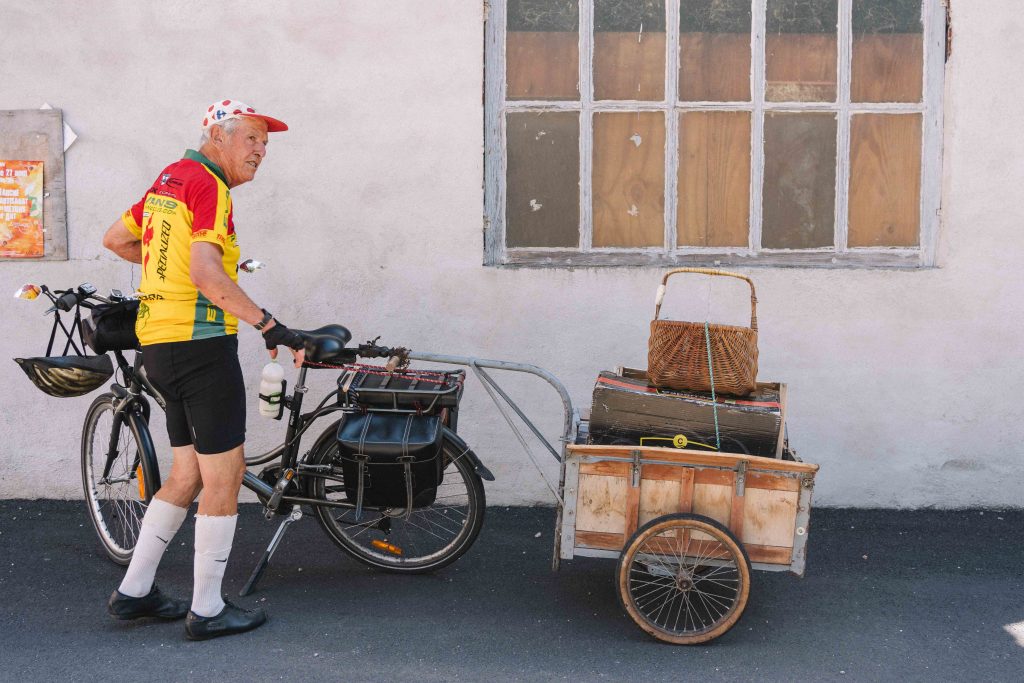
JL 1.
Rider – not in the first blush of youth, perhaps. Good for inclusion.
Bike – a mid-range electric (e-)bike. Essential on hills with full load – 50 kgs or more. 2 roomy sadle bags.
Trailer – an original French ‘remorque Michelin’. Legal trailer hook and chain essential Now something of an antique.
Cyclist seems curious about something…..
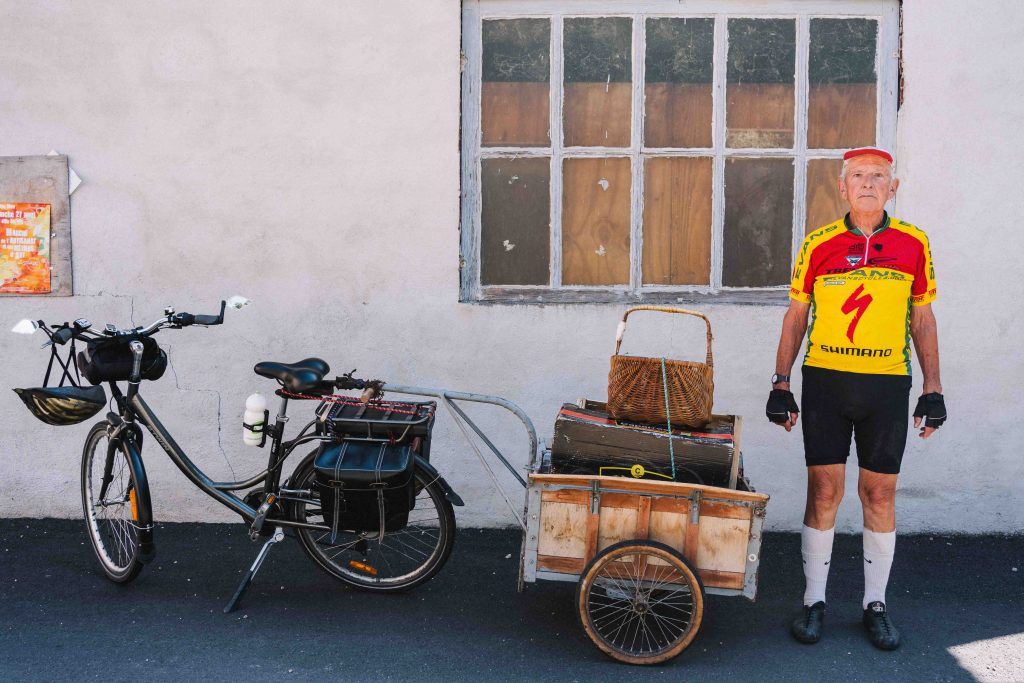
JL 1.
On Parade bike, loaded trailer and cyclist.
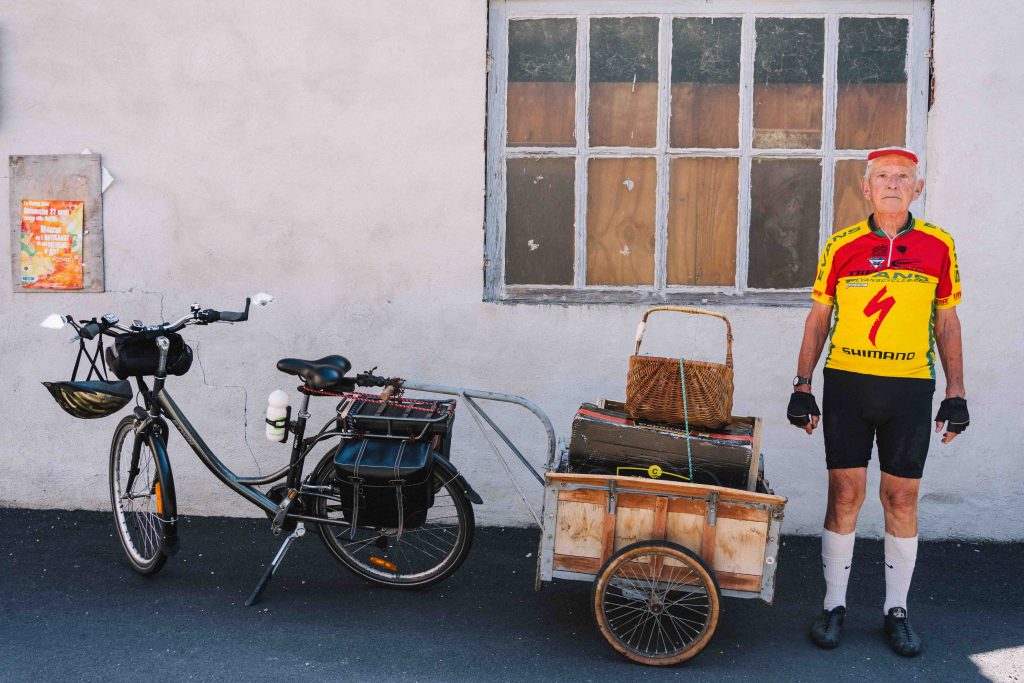
JL 1.
On Parade 2. Note: Bike with helmet, water bottle, front and rear bags. Trailer with 2 boxes and a basket. Cyclist with cycling shoes and cycling gloves.
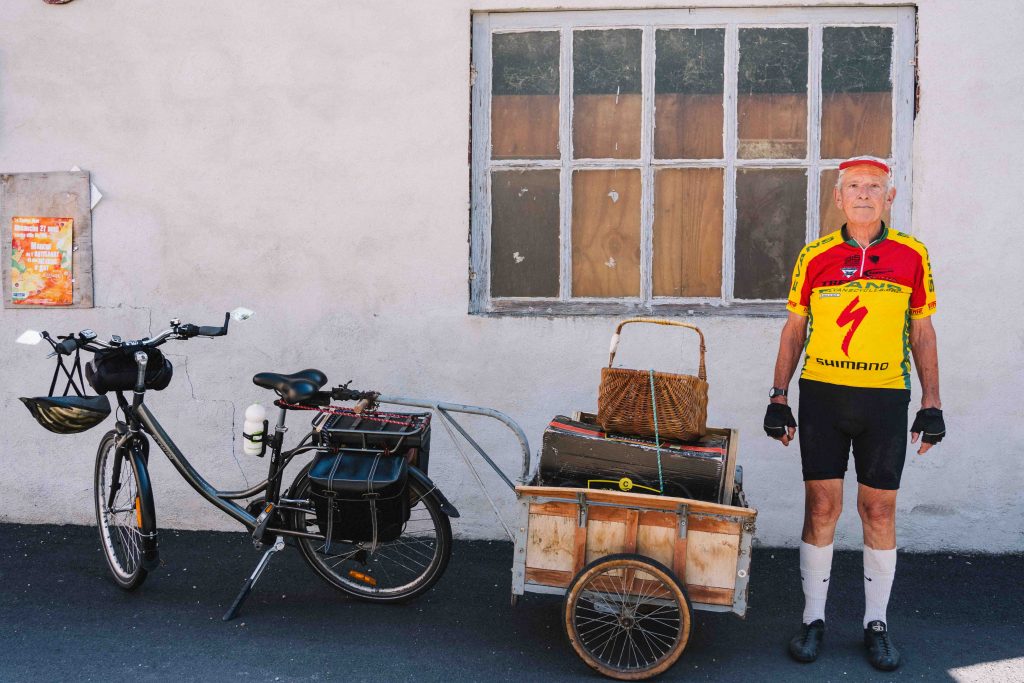
JL 1.
On Parade 3. Note: Bike has a prop stand and elastic (bungy) straps. Trailer has well-inflated tyres. Cyclist has padded cycling trousers and cycling top with rear pockets, which can be reached when cycling.
JL 2.
I like this photo. It’s a simple, but complete image of the subject matter. The subject matter is clear. It also gives equal weight to the components. The background is everyday, but acts like a ‘studio’. The window/poster imbalance is offset by the overlay of the cyclist. The short depth emphasises the side to side layout of the photo elements. The smile places it before Photos 1-3.
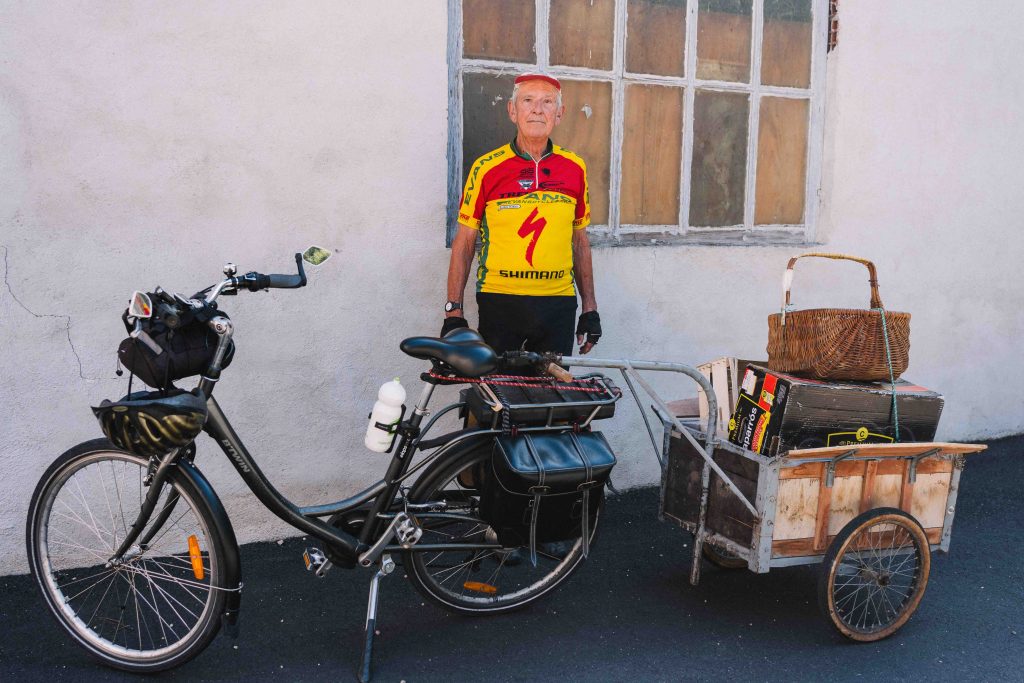
JL 1.
Family portrait on Parade.
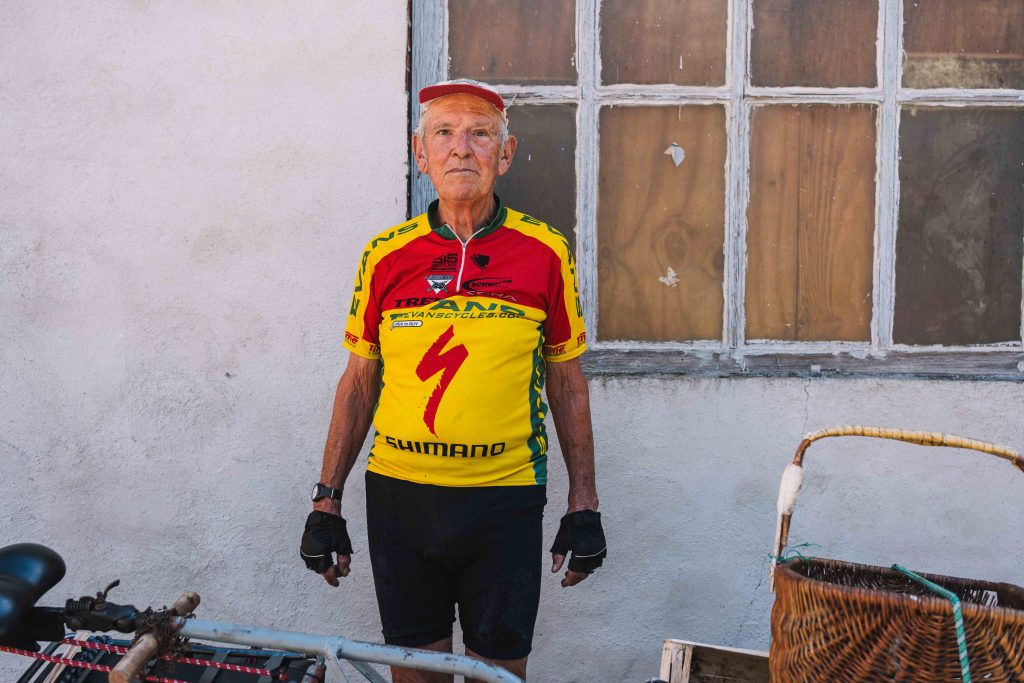
JL 1.
Cyclist – solo.
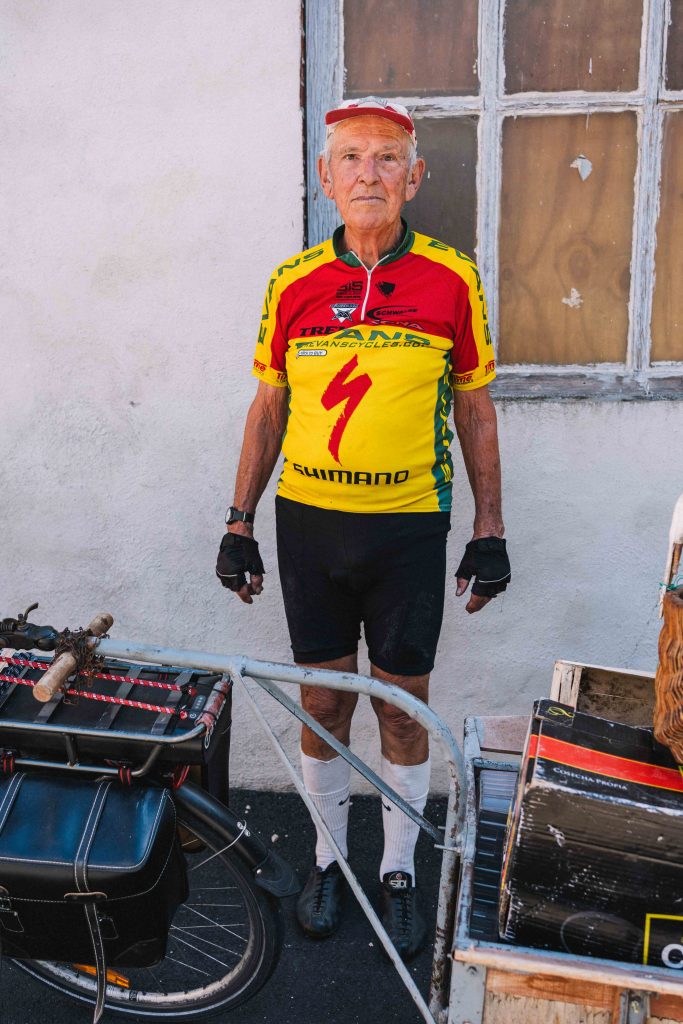
JL 1.
Full length cyclist solo.
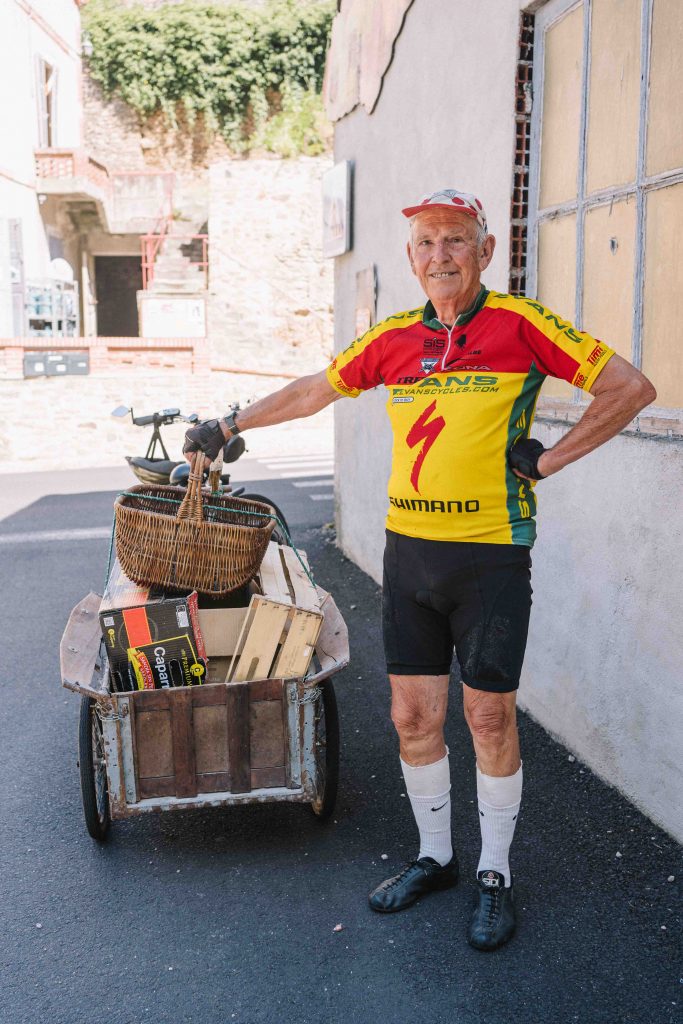
JL 1.
The rear view. Cyclist looks proud and is even smiling. Good rear view of trailer load.
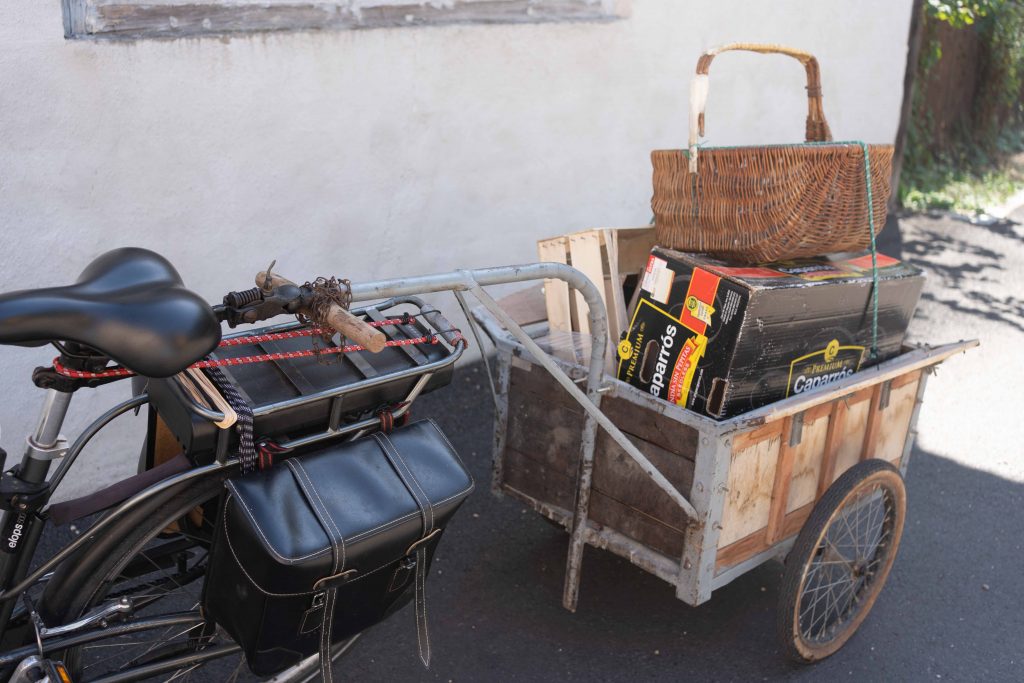
JL 1.
Rear view of bike and front view of trailer load. The boxes are empty. They are for storing firewood. The basket will be used to carry the kindling from the store to the fireplace.
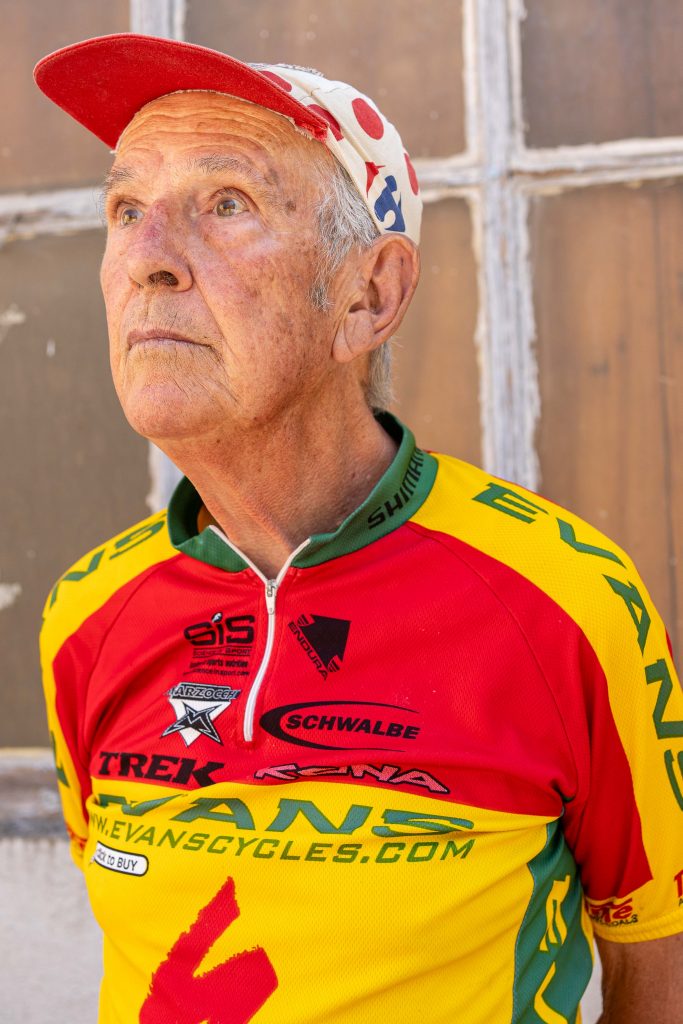
JL 1.
Cyclist looking upwards. More a pose than looking for something…..
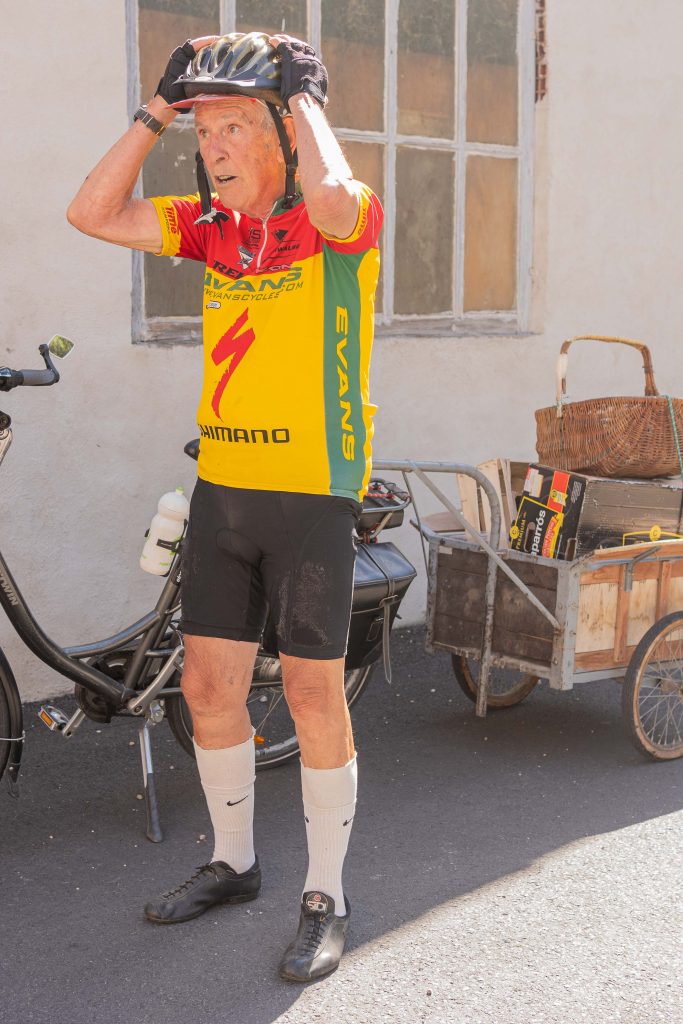
JL 1.
Cyclist getting ready for the off. Good view of cycling shoes. Made of leather with stiff soles. The latter support firm peddling with little loss of force.
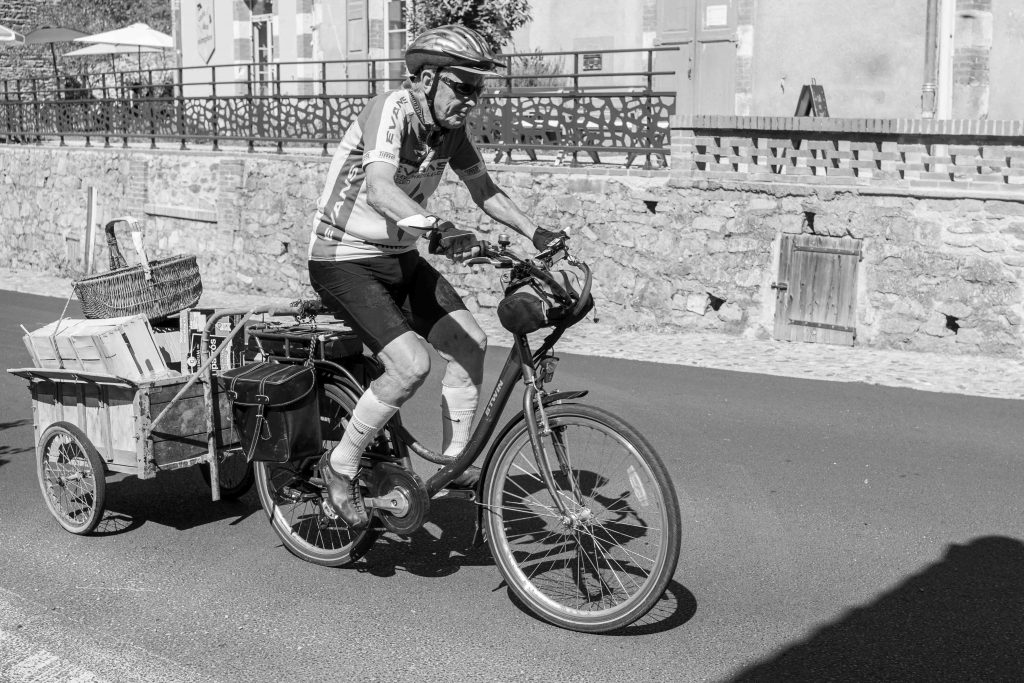
JL 1.
They are off! Cyclist, bike and trailer in (black and white) action. E-bike motor not being used.
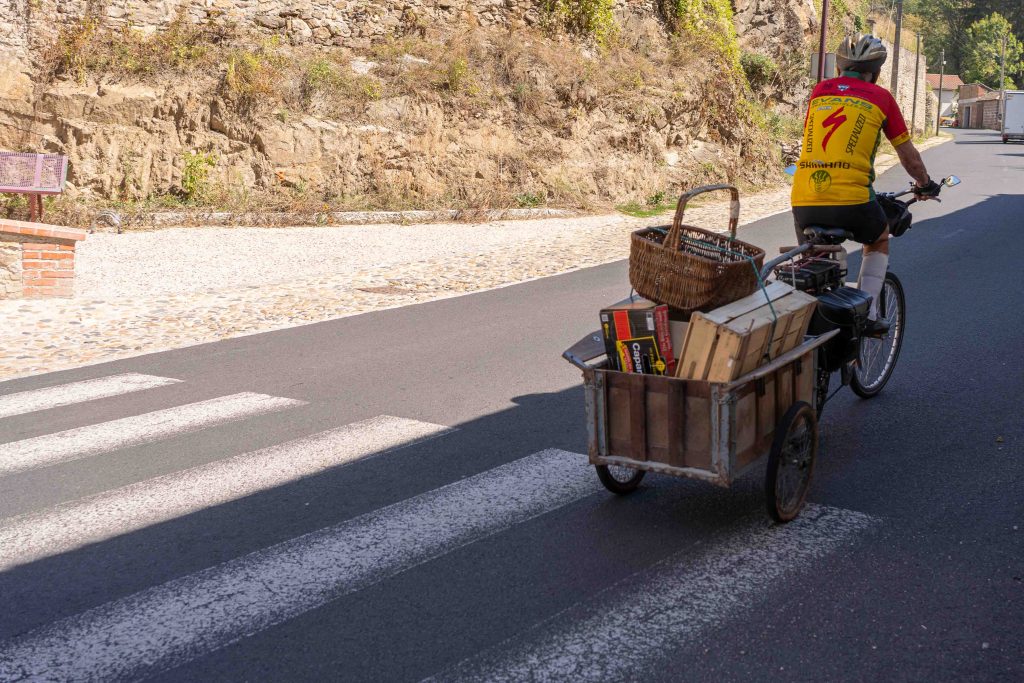
JL 1.
Goodbye! Uphill from now on……
JL 3.
Basic cycling skill requires – balancing the bike and its control, creating forward movement and its control and directing the bike and its control. Together these require the correct use of all the bike’s equipment – brakes, gears, handle bars, pedals etc. All these can be performed more-or-less well and more-or-less expertly. Different depths and extents of knowledge and experience are required.
Photo 13 shows correct balance, forward direction and speed for climbing the hill in question. Correct use of the bike’s equipment is implicit, but not shown explicitly.
I think better capture of cycling expertise would be achieved by more ‘action’ photos. For example, going round a bend on a steep hill at speed. Balance and direction would be explicit. Speed implicit.
Here are some photos from my own collection, taken during a tour of the Dolomites and Alps.
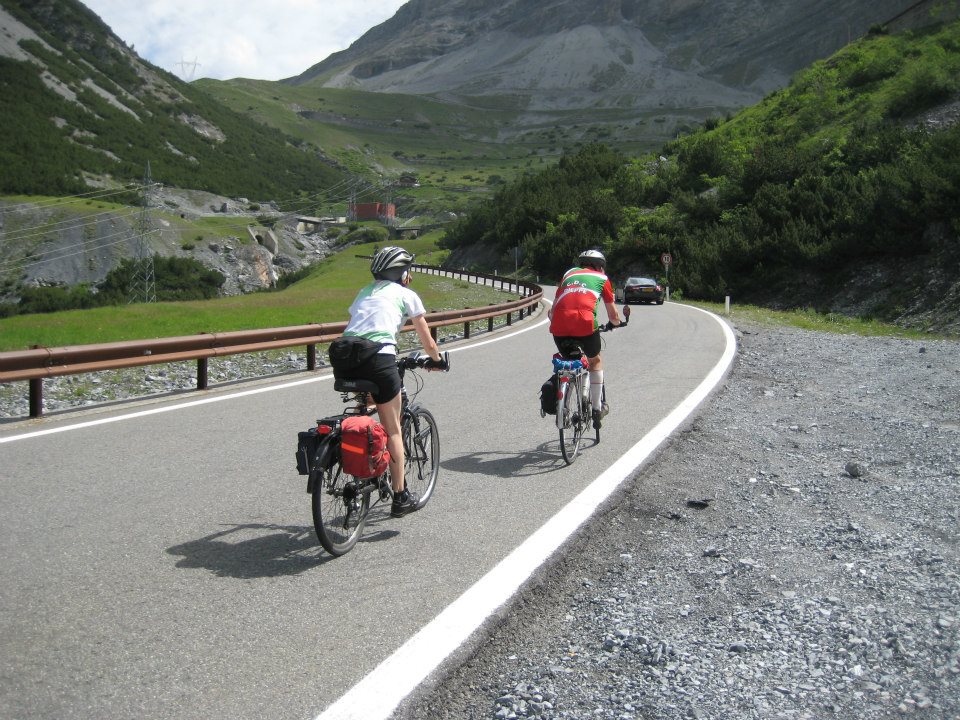
My partner and I in the middle of a steep climb. Balance upright. Direction curving. Speed slow
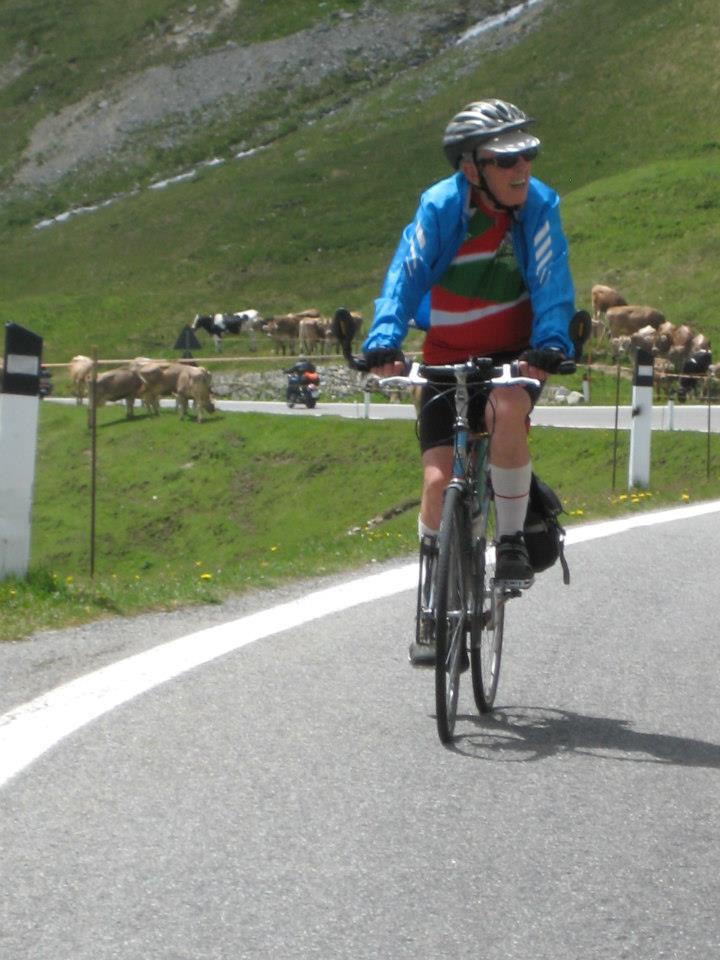
Steep climb, just curving into a bend. Balance upright. Direction curving. Speed slow.
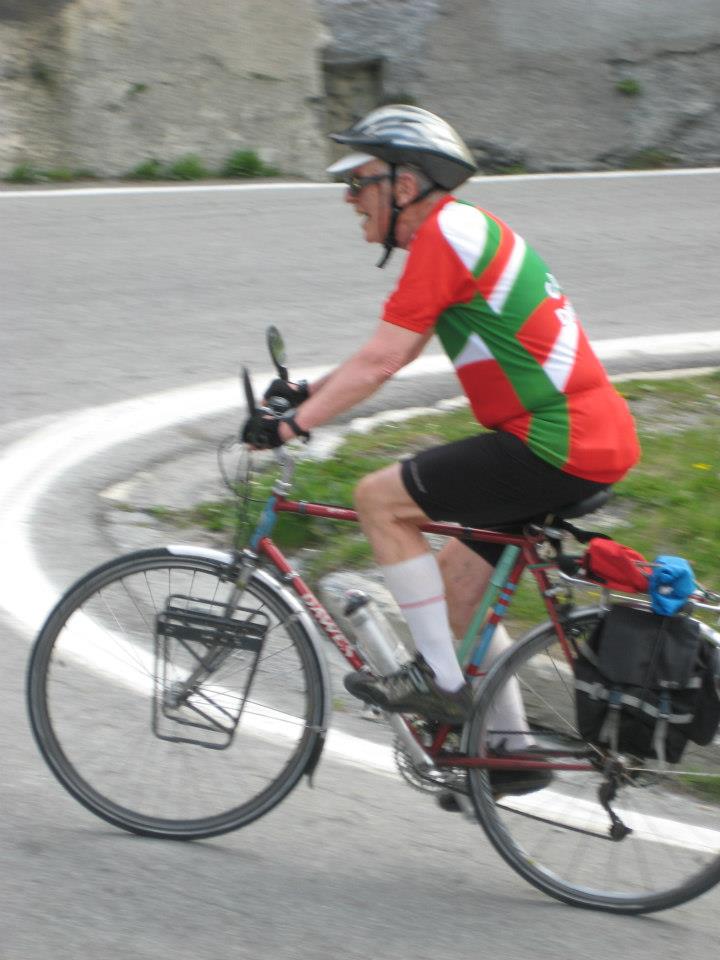
Steep climb. Sharp bend to the right. Balance slightly to the right. Direction turn preparation, slightly to the left. Speed slow.
Even better capture might be achieved by mean of videos. These could show the changes in balance, direction and speed with changing road conditions. Poor performance would be more observable.
I would be very interested to post the comments of Agathe, the photographer on the above and to hear what she has to say about photographing other types of expertise.